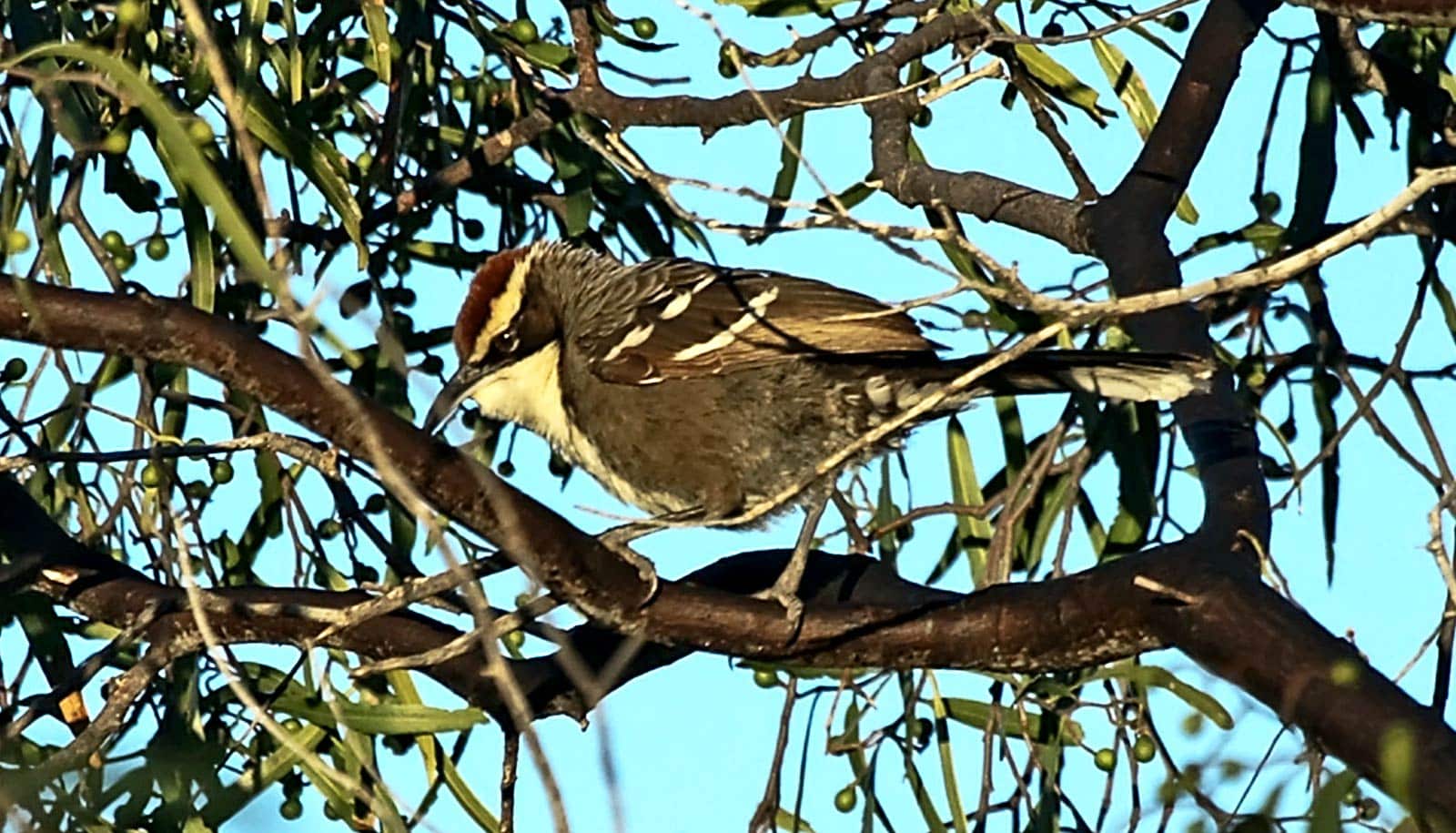The “building blocks” of bird calls resemble those of human languages, according to new research.
Through analysis of the calls of the chestnut-crowned babbler, a highly social bird from the Australian Outback, the researchers say they’ve gained new insight into the evolution of human language.
Human languages comprise meaningful words, which themselves are built from different combinations of meaningless sounds. This new research into bird calls, or vocalizations, uncovers that they can, like human languages, also break down into distinct meaningless sounds, or “building blocks.”

Previous research demonstrated that chestnut-crowned babbler calls seemed to be composed of two different sounds “A” and “B” in different arrangements when performing specific behaviors.
When flying, the birds produced a flight call “AB,” but when feeding chicks in the nest they emitted “BAB” provisioning calls. In the current study, the authors used playback experiments, previously used to test speech-sound discrimination in human infants, to probe the perception of the sound elements in babblers.
Listen to the in-flight call:
Listen to the provisioning call:
“Through systematic comparisons we tested which of the elements babblers perceived as equivalent or different sounds. In doing so, we were able to confirm that the calls could be broken up into two perceptually distinct sounds that are shared across the calls in different arrangements,” says lead author Sabrina Engesser of the University of Zurich.
“Furthermore, none of comprising elements carried the meaning of the calls confirming the elements are meaningless” she adds.
“To our knowledge, this is the first time that the meaning-generating building blocks of a non-human communication system have been experimentally identified,” says coauthor Simon Townsend of the University of Warwick and the University of Zurich.
“Although the building blocks in the babbler system may be of a very simple kind, it might still help us understand how combinatoriality initially evolved in humans,” he says.
“This system is reminiscent of the way humans use sounds to form meaningful words” coauthor Andy Russell of the University of Exeter explains.
These findings raise the exciting possibility that the capacity to generate meaning from meaningless building blocks is widespread in animals, but the authors caution there are still considerable differences between such systems and word generation in language.
They emphasize that a focus on the acoustic distinctiveness of sounds in meaningful animal vocalizations offers a promising approach to investigate the building blocks of non-human animal communication systems.
The research appears in PNAS. Additional researchers from the universities of Macquarie and New South Wales contributed to the work.
Source: University of Zurich, University of Warwick



